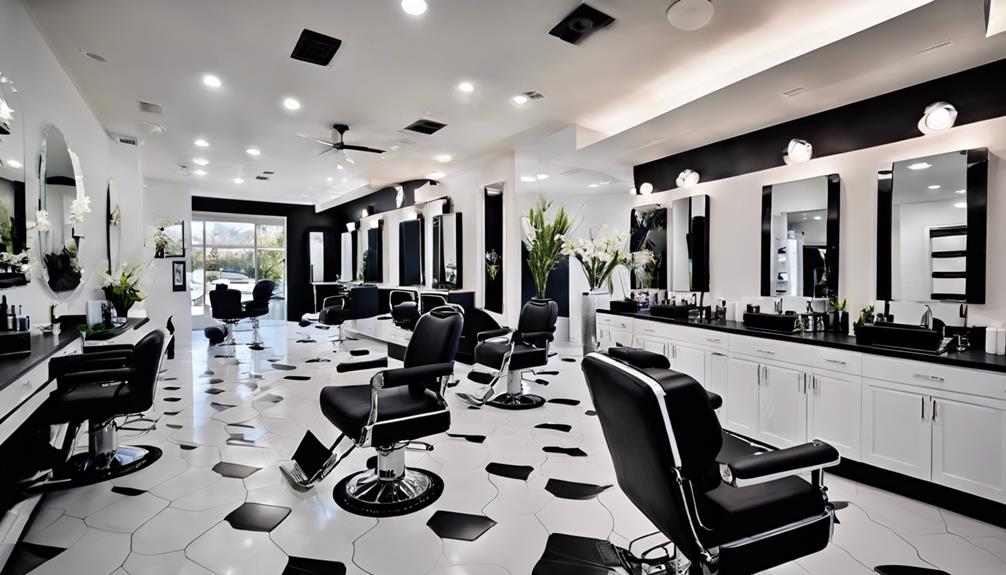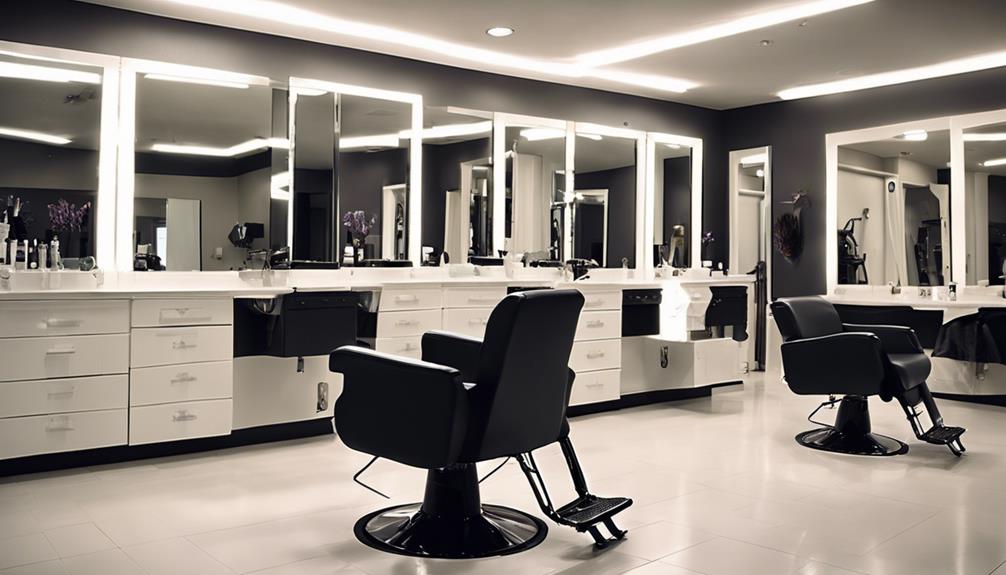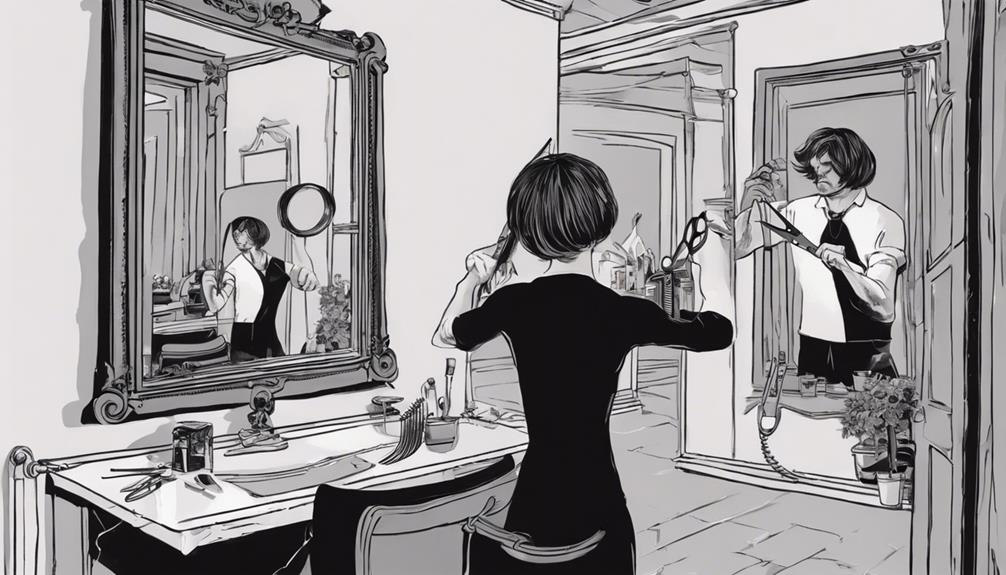When children decide to trim their own hair, it’s crucial to understand the motivations behind their actions. Stay composed and have an open discussion to avoid embarrassment. Implement clear consequences and boundaries promptly to instill a sense of accountability. Channel their desire to cut with creative activities. Educate them on proper hair maintenance and emphasize the dangers of DIY haircuts. Reinforce good behavior with words of affirmation and rewards. Promote safe scissor handling skills through practice and supervised recreational activities. Emphasize the significance of seeking professional assistance if necessary. By teaching proper grooming habits and providing artistic outlets, you can prevent future incidents. Parental oversight is vital in preventing impulsive choices. These tactics can effectively navigate through this challenging scenario.
Key Takeaways
- Stay calm and approach the situation with understanding.
- Establish clear consequences and boundaries promptly.
- Offer creative outlets for safe expression like arts and crafts.
- Educate on proper hair care and the role of professionals.
- Provide positive reinforcement and encourage creativity.
Understanding the Root Cause
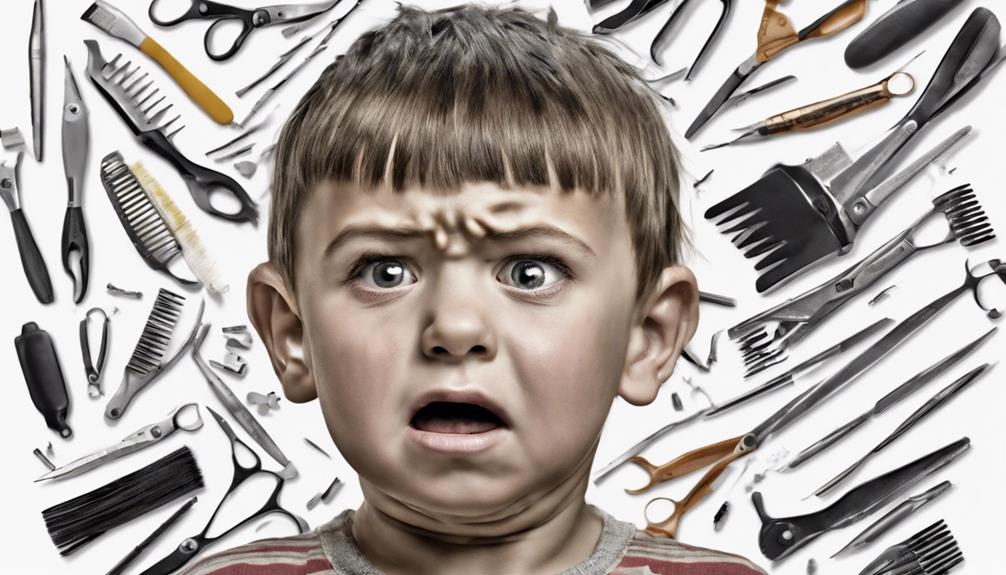
When kids cut their own hair, understanding the underlying reasons becomes essential in addressing this behavior effectively.
It's an important behavior among preschool-aged children, often stemming from a desire to explore new skills like cutting and pasting. Some kids see it as a form of creative expression, while others may do it to seek attention or out of sheer curiosity.
By recognizing the root cause behind this behavior, parents can better respond with empathy and guidance. It's vital to approach the situation with understanding rather than frustration, as children are often driven by innocent motives.
Encouraging open communication and providing alternative outlets for creativity can help redirect this behavior positively. By acknowledging the reasons why children cut their own hair, we can create a supportive environment that nurtures their development and helps them express themselves in healthier ways.
Avoiding Negative Reactions

When faced with a child who's cut their own hair, it's crucial to remain composed and approach the situation calmly. By staying level-headed, we can create a safe space for open communication and understanding the reasons behind the haircut.
Offering reassurance and support will prevent the child from feeling ashamed and help guide them towards positive behavior.
Calmly Addressing the Situation
Let's approach the situation of a child cutting their own hair with a calm and understanding demeanor to foster a positive and constructive conversation.
When kids cut their hair, it's important to stay composed and avoid negative reactions. By keeping a level head, we create a safe space for the child to explain their actions without fear of harsh judgment.
Instead of scolding, try to understand why the haircut happened. This approach helps address any underlying issues gently. Use this moment as a teaching opportunity, guiding the child on making better choices in the future.
Reassure them that mistakes are normal and offer support to prevent anxiety. By handling the situation calmly, we can encourage open communication and strengthen trust with our children.
Encouraging Open Communication
Encouraging open communication with your child about the reasons behind their hair-cutting incident involves creating a safe and non-judgmental environment. When addressing the situation, it's crucial to approach the conversation with sensitivity and understanding. Here are some ways to foster open communication without negative reactions:
- Ask with Calmness: Inquire about the hair-cutting incident with a gentle tone, showing curiosity rather than anger.
- Avoid Blame: Refrain from scolding or shaming your child, as this can hinder their willingness to share their feelings.
- Listen Actively: Pay attention to what your child has to say, without jumping to conclusions or expressing immediate disapproval.
Establishing Consequences and Boundaries
To prevent future incidents of children cutting their own hair, it's essential to establish clear consequences and boundaries.
When a child decides to cut her hair without permission, it's vital to address the situation promptly and firmly. By setting specific consequences for this behavior, such as loss of privileges or additional chores, we can teach accountability and discourage repeat incidents.
Alongside consequences, it's important to set clear boundaries around scissor use. Make sure children understand when and how they can use scissors, emphasizing that cutting hair isn't an acceptable activity. Open communication about the risks and importance of leaving hair cutting to professionals can help prevent mishaps.
Using this incident as a learning opportunity, we can reinforce the rules and expectations regarding personal grooming. Consistently enforcing consequences will help children grasp the seriousness of cutting their own hair without permission, fostering a greater understanding of boundaries and accountability.
Offering Creative Outlets

Offering creative outlets, such as arts and crafts, can effectively redirect children's cutting impulses. Encouraging them to engage in activities like cutting paper or practicing scissor skills in a safe environment can be both fun and educational.
Providing a designated area for scissor use allows children to explore and express their curiosity and creativity while minimizing the risk of impulsive hair cutting.
Artistic Expression Through Crafts
Engaging in craft activities with children provides a positive outlet for their creativity while fostering important fine motor skills development through safe scissor activities like paper cutting and collage making. When it comes to artistic expression through crafts, here are three key benefits:
- Controlled Environment: Craft projects offer a safe and controlled space for children to practice their cutting skills without the risk of cutting their own hair impulsively.
- Skill Development: Encouraging children to engage in art projects can teach them the proper and safe use of scissors, enhancing their fine motor skills.
- Creative Expression: Crafts allow children to express themselves artistically, channeling their creativity into productive and fulfilling activities.
Fun With Temporary Styles
Exploring temporary styling options can provide children with a safe and creative way to experiment with different looks without the need for permanent changes like cutting their hair. Encourage your child to try out temporary hair color sprays or chalk for a fun and safe styling experience.
Utilize hair accessories such as clips, headbands, or ribbons to create unique looks that can easily be removed. Consider washable hair tattoos or stickers for a non-permanent style change that adds a touch of fun.
For a playful transformation, experiment with clip-in hair extensions or wigs that can be easily reversed. Get creative with braiding, twisting, or styling techniques to switch up your child's look without the need for scissors.
Educating on Proper Hair Care
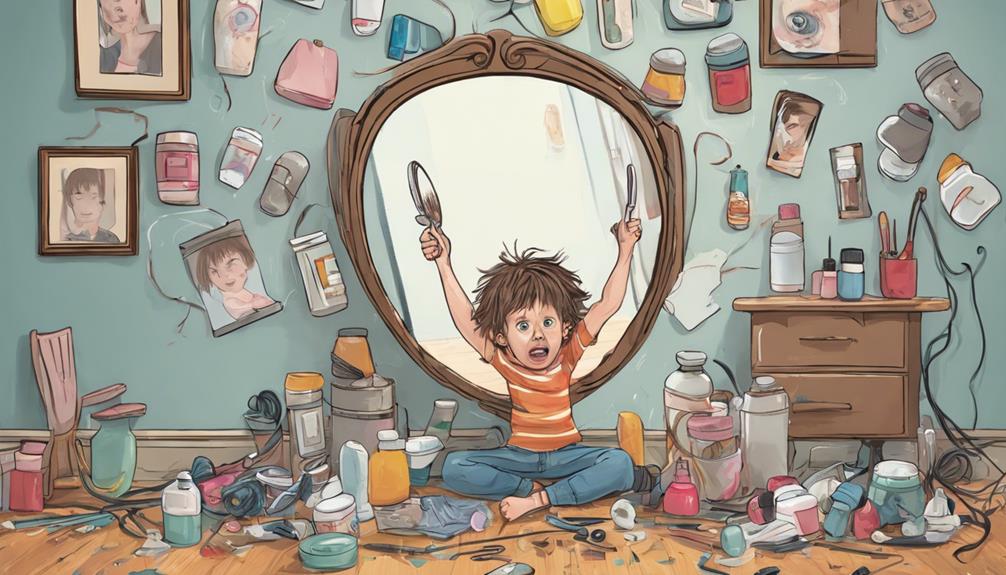
Understanding the significance of proper hair care is essential in guiding children away from the temptation of cutting their own hair. Here are three key points to educate children on the importance of professional hair care:
- Hair Cutting Professionals: Explain to kids the expertise hairstylists possess in creating stylish and healthy haircuts. Discuss how professionals use proper tools and techniques to achieve desired looks while maintaining hair health.
- Proper Hair Care Routines: Teach children about the significance of regular washing, conditioning, and styling to keep their hair looking its best. Emphasize the role of hairstylists in recommending suitable hair care products and routines.
- Risks of DIY Haircuts: Highlight the potential consequences of cutting hair at home, such as uneven lengths, damage, or an undesirable appearance. Encourage kids to trust professionals for safe and satisfying results that align with their hairstyle preferences.
Communicating Openly and Reassuring
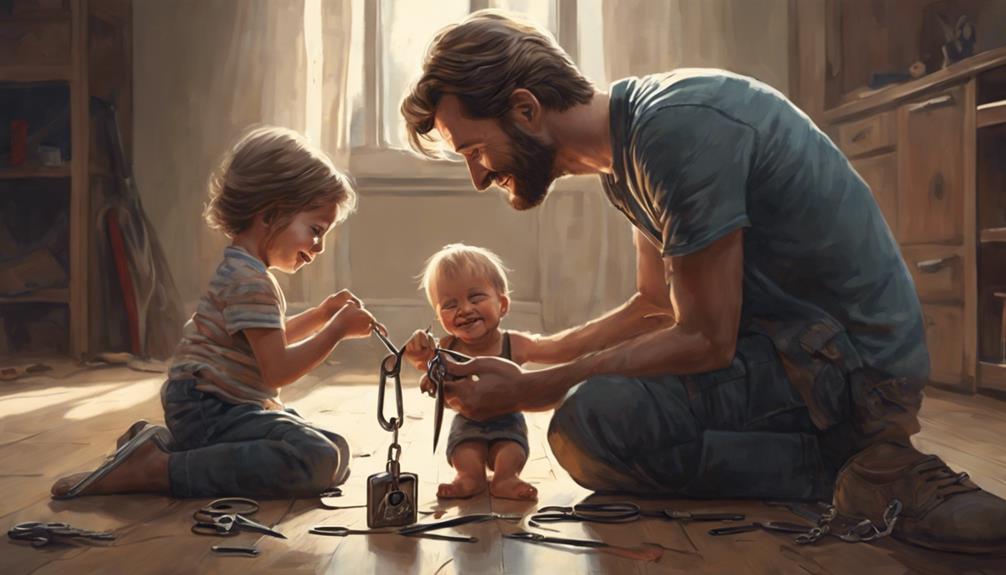
Let's address the importance of fostering open communication and providing reassurance when dealing with children who cut their own hair. It's crucial to create a safe space for our kids to express themselves openly and honestly. By encouraging open communication, we can understand the reasons behind their actions and offer the necessary support. Reassurance plays a crucial role in this process, emphasizing that mistakes happen, and it's okay. Rather than focusing on scolding, we should concentrate on teaching moments and guiding them through the experience positively.
| Tips for Communicating Openly and Providing Reassurance |
|---|
| Encourage your child to share their feelings and thoughts openly. |
| Validate their emotions and reassure them that they are safe to express themselves. |
| Offer support and guidance to help them navigate through challenges. |
Turning the Situation Into a Learning Opportunity

Let's focus on turning the haircut incident into a valuable learning experience.
By offering positive reinforcement techniques and encouraging creativity and expression, we can guide the child towards understanding the importance of proper grooming habits.
Teaching them how to express themselves creatively in ways that don't involve cutting their hair can redirect their actions positively.
Positive Reinforcement Techniques
Using positive reinforcement techniques can effectively transform a child's haircut mishap into a valuable learning experience. When dealing with an aspiring stylist at home, it's essential to approach the situation with understanding and patience. Here are three ways to utilize positive reinforcement techniques:
- Praise Honesty: Commend the child for being honest about their actions, fostering a sense of openness and trust.
- Encourage Problem-Solving: Discuss alternative ways to express creativity without cutting hair, promoting critical thinking and decision-making skills.
- Reward Positive Behavior: Implement a reward system for following rules and boundaries around using scissors, reinforcing the importance of making good choices.
Encouraging Creativity and Expression
Encouraging creativity and expression amid a child's self-haircutting incident presents an opportunity for growth and learning. By redirecting the urge to cut hair towards positive outlets, we can nurture the child's artistic abilities and promote healthy self-expression. Here's a table to guide you in fostering your child's creativity:
| Activities | Description | Benefits |
|---|---|---|
| Art and Crafts | Provide materials for drawing, painting, or sculpting | Enhances fine motor skills |
| Supervised Scissor Play | Allow cutting paper or fabric under supervision | Develops cutting skills |
| Doll Hair Styling | Encourage styling a doll's hair instead of their own | Fulfills the desire to cut hair safely |
Teaching Proper Grooming Habits
We can guide children towards learning valuable grooming habits by utilizing the self-haircutting incident as an educational opportunity.
Here are three ways to turn this situation into a positive learning experience:
- Demonstrate Proper Haircare: Show children the importance of leaving hair cutting to professionals to prevent mishaps and maintain healthy hair.
- Encourage Communication: Let it go and encourage children to express their hair preferences while seeking guidance before making drastic changes.
- Establish Grooming Routines: Teach children about the value of consistent grooming habits, emphasizing the role of parents and professionals in ensuring proper hair care and styling choices.
Seeking Professional Help if Needed

If necessary, professional hairstylists can expertly address and correct any hair mishaps resulting from children cutting their own hair. Hair professionals have the skills and knowledge to fix unsupervised trims or uneven cuts, providing invaluable assistance in managing the aftermath effectively.
Consulting a hairstylist not only guarantees a satisfactory resolution but also prevents further mishaps. These experts can offer advice on styling the hair post-cut, guiding parents and children through the process with expertise and care.
By seeking help from a hairstylist, parents can rest assured that their child's DIY haircut will be handled professionally. Hair professionals are equipped to handle such situations and can rectify any haircut mishaps caused by children, turning a potential disaster into a manageable situation.
Preventing Future Incidents
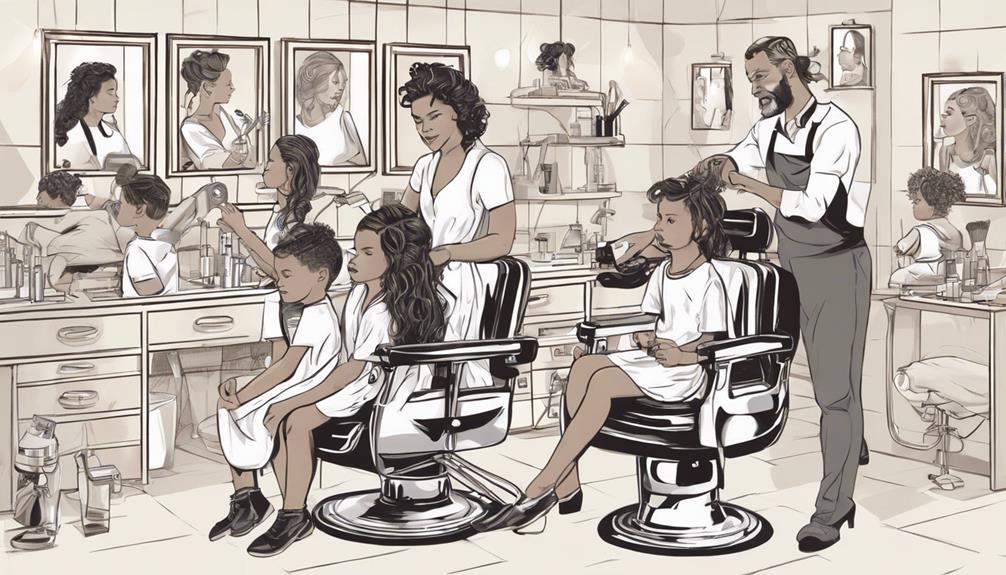
To prevent future incidents of children cutting their own hair, it's vital to educate them on proper hair care practices. Here are some tips to help navigate this normal stage of development:
- Teach Proper Handling: Explain to your child that only professionals or parents should handle cutting hair to avoid mishaps. By establishing this boundary, you can safeguard against impulsive decisions that may lead to unwanted haircuts.
- Supervise Closely: Keep a vigilant eye on your child during activities involving scissors to guarantee safety. Providing close supervision can deter impulsive actions and promote responsible behavior.
- Encourage Safe Outlets: Channel your child's desire to cut into positive activities like arts and crafts. By fostering creativity in a secure environment, you can help them express themselves without resorting to cutting their own hair.
Importance of Parental Supervision
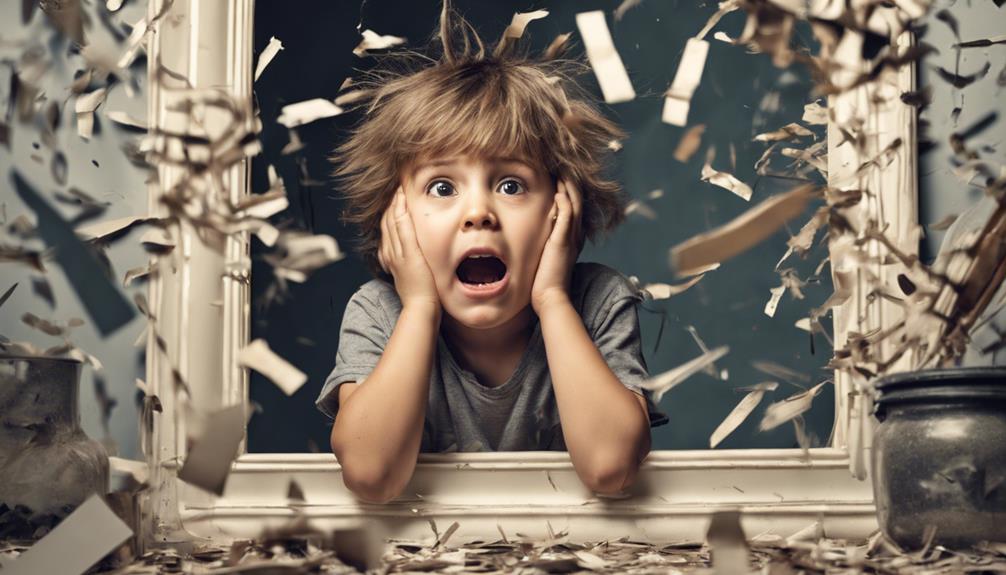
Parental supervision plays a crucial role in safeguarding children from impulsive hair-cutting incidents. Keeping a watchful eye on our little ones while they engage in activities involving scissors is essential in preventing unexpected cuts.
By actively monitoring scissor use, we can greatly reduce the likelihood of hair cutting mishaps. Setting clear boundaries and rules around scissor use reinforces the importance of parental supervision, ensuring that our children understand the potential risks associated with cutting their own hair.
Additionally, supervising children during creative activities not only fosters a safe environment but also provides an opportunity to intervene before any impulsive decisions are made. Through consistent supervision and guidance, we can create a secure space for our kids to explore their creativity without the worry of unexpected haircuts.
Frequently Asked Questions
At What Age Do Kids Cut Their Own Hair?
Around ages 3 to 6, kids may start cutting their own hair. It's a common behavior during the preschool years as they explore new skills. Curiosity and a desire for independence often drive this behavior.
What to Do When You Can't Handle Your Child Anymore?
When we can't handle our child anymore, it's important to pause, breathe, and seek support. Taking care of ourselves allows us to better care for our child. Asking for help is not a sign of weakness; it's a strength.
Why Is My 7 Year Old Daughter so Difficult?
We're finding our 7-year-old daughter challenging as she progresses into middle childhood. Her increased independence and complex emotions can lead to mood swings and defiance. Setting clear expectations and open communication helps navigate these behaviors.
How Do I Help My Child Feel in Control?
We empower our child by offering choices and encouraging decision-making within safe boundaries. Providing opportunities for expression and participation builds confidence. Guiding them towards responsible choices while supporting their autonomy fosters a sense of control and independence.
Is Cutting Hair Yourself a Common Issue for Kids?
For many kids, cutting their own hair cut duration explained is a common issue. Whether it’s out of curiosity or simply wanting to make a change, it’s important to teach them the proper way to handle scissors and seek help from a professional when it comes to styling their hair.
Conclusion
To sum up, dealing with kids who cut their own hair can be a challenging situation for parents.
By understanding the root cause, avoiding negative reactions, and establishing consequences and boundaries, parents can effectively address this behavior.
For example, a parent may discover that their child is cutting their hair due to feelings of anxiety or stress, prompting a discussion about healthy coping mechanisms.
With patience and communication, parents can navigate this situation with care and support.


